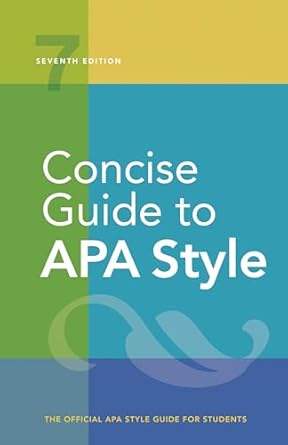[toc]
mastering book citations a comprehensive guide
Concise Guide to APA Style: 7th Edition (OFFICIAL)
Page 280 Review
Navigating the Labyrinth of Academic Citations: A Deep Dive into Book References
In the realm of academic writing, the ability to accurately and effectively cite sources is paramount.
It not only lends credibility to one’s work but also acknowledges the intellectual contributions of others.
The excerpt provided offers a glimpse into the intricate world of book citations, specifically focusing on edited ebooks, audiobooks, books in other languages, translated works, and republished editions.
Let’s delve deeper into each of these categories, drawing upon the provided examples for clarity.
Edited Ebooks and Audiobooks: A Modern Twist
The digital age has ushered in new formats for consuming literature, necessitating specific citation guidelines.
The excerpt highlights the citation of an edited ebook, as demonstrated by the example of “Guided Participation in Pediatric Nursing Practice” by Pridham, Limbo, & Schroeder (2018):
“Pridham, K.
F., Limbo, R., & Schroeder, M. (Eds.). (2018).
Guided participation in pediatric nursing practice: Relationship-based teaching and learning with parents, children, and adolescents.
Springer Publishing Company. http://a.co/OlIAiVgt”
Parenthetical citation: (Pridham et al., 2018)
Narrative citation: Pridham et al. (2018)”
The key takeaway here is the inclusion of “(Eds.)” to denote that the work is edited.
Furthermore, the URL is provided for easy access.
Similarly, audiobooks require a notation after the title, which clarifies the format.
Bridging Linguistic Gaps: Citing Books in Other Languages
Scholarly pursuits often involve engaging with works written in languages other than one’s own.
In such cases, the excerpt emphasizes the importance of providing a translation of the book title in square brackets:
“Amano, N., & Kondo, H. (2000).
Nihongo no goi tokusei [Lexical characteristics of Japanese language] (Vol. 7).
Sansei-do.
Piaget, J., & Inhelder, B. (1966).
La psychologie de I’enfant [The psychology of the child].
Quadrige.
Parenthetical citations: (Amano & Kondo, 2000; Piaget & Inhelder, 1966)
Narrative citations: Amano and Kondo (2000) and Piaget and Inhelder (1966)”
This ensures that readers, regardless of their linguistic background, can understand the context and scope of the cited work.
The Echo of Time: Citing Republished and Translated Works
Many seminal works undergo republication or translation, making it crucial to acknowledge both the original publication date and the date of the republished or translated version.
The excerpt provides examples of how to handle such scenarios:
“Piaget, J., & Inhelder, B. (1969).
The psychology of the child (H.
Weaver, Trans.; 2nd ed.).
Basic Books. (Original work published 1966)
Parenthetical citation: (Piaget & Inhelder, 1966/1969)
Narrative citation: Piaget and Inhelder (1966/1969)”
Freud, S. (2010).
The interpretation of dreams: The complete and definitive text (J.
Strachey, Ed. & Trans.).
Basic Books. (Original work published 1900)
Rowling, J.
K. (2015).
Harry Potter and the sorcerer’s stone (J.
Dale, Narr.) [Audiobook].
Pottermore Publishing. http://bit.ly/2TcHchx (Original work published 1997)
Parenthetical citations: (Freud, 1900/2010; Rowling, 1997/2015)
Narrative citations: Freud (1900/2010) and Rowling (1997/2015)”
The use of a slash (/) to separate the original and republished/translated dates is a standard practice, ensuring clarity and historical accuracy.
The Significance of Accurate Citations
The examples provided underscore the importance of meticulous attention to detail when citing books.
Whether it’s an edited ebook, a book in another language, a translated work, or a republished edition, each category demands specific formatting conventions.
Adhering to these guidelines not only demonstrates academic integrity but also facilitates the reader’s ability to locate and engage with the cited sources.
In essence, accurate citations serve as a roadmap, guiding readers through the vast landscape of scholarly knowledge.
In conclusion, mastering the art of book citations is an essential skill for any academic writer.
By understanding the nuances of each citation category and following established guidelines, researchers can ensure the credibility and clarity of their work, contributing to the ongoing dialogue within their respective fields.
Buy full ebook for only $18: https://www.lulu.com/shop/american-psychological-association/concise-guide-to-apa-style-7th-edition-official/ebook/product-rmzpq54.html?page=1&pageSize=4


Leave a Reply